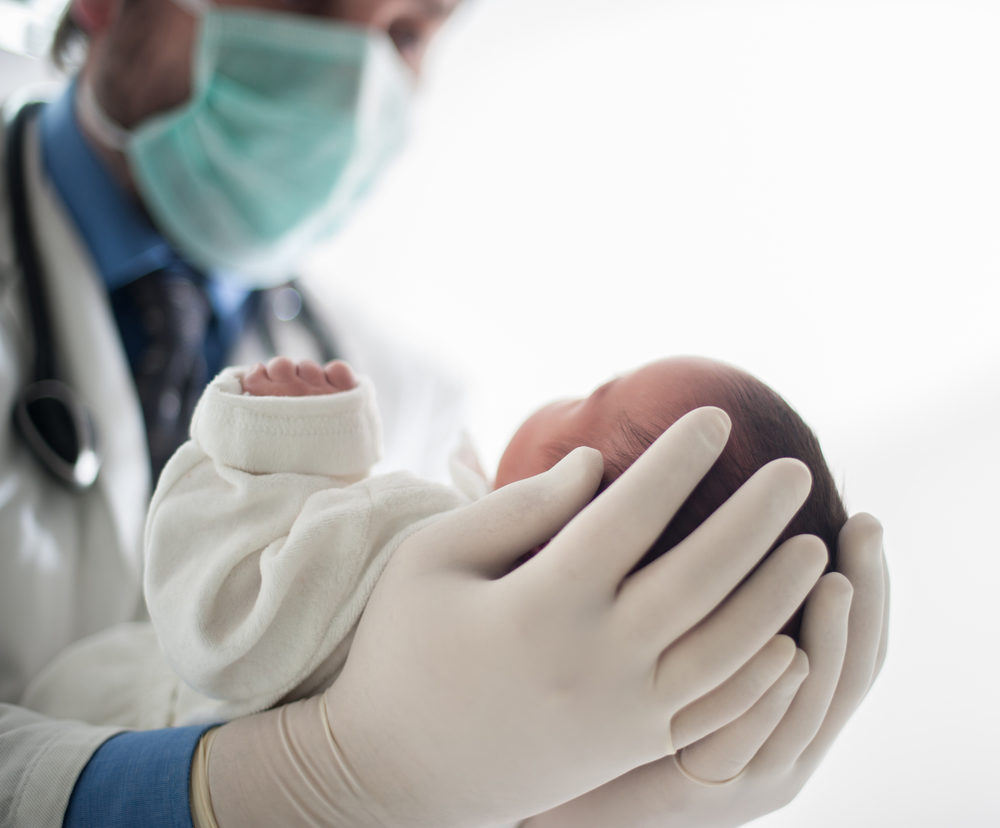
Every expectant parent hopes for a successful labor and delivery, resulting in a healthy baby. However, thousands of children in the United States suffer birth injuries every year. Many of the injuries are because of a mistake caused by a doctor, nurse, surgeon, or another medical team member who has not performed the standard level of care.
While many injuries heal on their own or can easily be corrected, others do not. This article will discuss the most common types of birth injuries and how they occur.
How do birth injuries occur?
The baby sustains birth injuries during the labor and delivery process. Many factors could lead to a birth injury. Some are unavoidable conditions, and others are caused by medical negligence during labor and delivery.
Here are some frequent conditions that can lead to birth injuries:
- Large babies: If the birth weight is more than eight pounds, parents and doctors should recognize an uptick in risks associated with vaginal birth, including dystocia and cephalopelvic disproportion.
- Dystocia: This is a condition caused by a small maternal pelvis, an awkwardly positioned fetus, or by the failure of the uterus and cervix to contract and expand safely.
- Cephalopelvic disproportion: The size of a baby’s head or body is too large to fit through the mother’s pelvis.
- Prematurity: Babies born before 37 weeks are recognized as premature, having even more fragile bodies than healthy newborns, and could more easily be injured.
- Abnormal birthing presentation: A familiar example of this is a breech birth when the baby’s bottom presents first instead of the baby’s head.
Birth injuries that are associated with medical negligence include:
- Improper fetal monitoring.
- Poor communication between the medical staff resulting in incorrect instructions for mother and baby care.
- Prescribing incorrect medication causing an adverse reaction or trauma.
- Performing an intervention such as a cesarean section when either the mother or unborn baby is in distress.
- The misuse of vacuum extractors or forceps when delivering the baby.
Related: What You Should Know About Labor and Delivery Negligence
Common types of birth injuries
No matter what the circumstances are that cause an injury at birth, the fact of the matter is they do happen. And, the list of injuries is rather long.
Hypoxic Ischemic Encephalopathy (HIE): HIE occurs when the fetus cannot get the proper amount of oxygen during the birthing process. Brain injuries caused by decreased blood flow to the brain are cerebral ischemic injuries and may lead to permanent brain damage or death. Doctors who fail to monitor your child for signs of fetal distress put the baby at significant risk of permanent brain damage.
Cerebral palsy (CP): Cerebral palsy results from some form of brain damage. Undiagnosed brain infections or a case of meningitis could lead to CP, as can a congenital defect. In cases of medical negligence, however, cerebral palsy is a birth injury resulting from one of the following:
- Oxygen deprivation, either during labor or by the umbilical cord cutting off the oxygen supply.
- Brain swelling or bleeding caused by errors made by delivery equipment, including a vacuum extractor or forceps.
- Untreated skull fractures affect oxygen levels or those that cut off blood circulation to the brain.
- The medical team causing damage to the brain during cesarean delivery.
- Negligence in monitoring a fetus for indications of either infection or injury.
- Inadequate postpartum care.
Fractures/Breaks: Skull fractures, already mentioned above, often are caused by mistakes during a cesarean delivery or by misuse of delivery equipment. They are usually diagnosed if the newborn shows signs of swelling or bruising, or if the head seems disfigured. Some babies have fluid, including blood, leaking out of their ears, eyes and noses. If a skull fracture is left untreated, the baby could experience seizures or a stroke, and the area surrounding the brain could also swell. With too much pressure around the brain, the child could experience permanent brain damage.
Breaks of the collarbone or clavicle are common, especially during a tough delivery or breech birth.
Cephalohematoma: This often appears as a raised lump on the head a few hours after delivery due to bleeding between the skull bone and the fibrous covering. It can be caused by pressure on the skull during delivery using forceps or a vacuum extractor. Although the body can reabsorb the blood over time and the cephalohematoma can disappear, babies with more severe cases are at risk for developing jaundice.
Kernicterus: This is a form of brain damage occurring in children with severe jaundice. Kernicterus can happen if a doctor does not diagnose and treat jaundice quickly, causing a buildup of bilirubin (a yellowish pigment that passes through the liver and is eventually excreted out of the body) in the child’s bloodstream.
Facial paralysis: Pressure on a baby’s face during the delivery could cause damage to the child’s facial nerves. Like cephalohematomas, facial paralysis is often due to mistakes made with equipment and can be identified when a particular area of the baby’s face does not move. A baby who has such paralysis may not close one of his or her eyes. If the paralysis were simply caused by a bruised nerve, the child would gain facial movement back in a few weeks. If the nerve was torn, the damage could be permanent, and surgery may be required.
Subconjunctival hemorrhage: This is the breakage of small blood vessels in a baby’s eyes and is frequently due to pressure during labor contractions. Identified when one or both eyes have a bright red band in the white part of the eye, most cases disappear within two weeks. However, subconjunctival hemorrhage can be caused by mistakes made by medical staff.
Brachial plexus injuries: These birth injuries occur when the brachial plexus (a network of nerves running the spine’s length and gives feeling to the arm’s nerves) is damaged. The nerves control the muscles in the shoulders, elbows, wrists and hands.
Brachial plexus injuries are categorized according to how the nerves are damaged and the severity of the injury. There are four types of brachial plexus injuries:
- Neuropraxia (Stretch): Neuropraxia injuries are the most common and the least severe. They occur when the nerve has been injured somehow, but it has not torn. Most neuropraxia injuries will heal themselves, though it is possible – in about 10% of cases – they will not.
- Neuroma. Neuroma injuries are tears that have healed themselves, like neuropraxia, but the scar tissue is pressing on the nerve. The scarring prevents the child’s muscles from receiving any signals from the nerves themselves.
- Rupture. A rupture of the brachial plexus nerve occurs when the nerve itself tears. It remains attached to the spinal column.
- Avulsion. Avulsion injuries are the most severe. This occurs when the nerve has been torn from the spinal column. If left untreated, the affected arm may be paralyzed in some manner for the rest of the child’s life.
When the brachial plexus nerves are damaged during childbirth, the result is usually Erb’s palsy or Klumpke’s palsy. Erb’s palsy is a common injury of the upper brachial plexus nerves, which causes numbness and loss of motion around the shoulder. Klumpke’s Palsy is a less common injury that affects the lower brachial plexus, leading to loss of motion and/or sensation in the wrist and hand.
While the thought of your newborn suffering any of these injuries may be concerning, being educated and detecting any issues early on is key to a more successful outcome for your child. The good news is progress is being made to reduce childbirth injuries. However, if you or someone you know has a child suffering from a birth injury, it’s also essential to seek legal advice. Parents are not only left heartbroken after an injury, but they also could be left responsible for years, perhaps even a lifetime, of paying for the injured child’s care. An attorney knowledgeable in birth injury cases can help you seek compensation for your child’s injuries.
At Paulson & Nace, we understand that you are going through perhaps the most challenging time of your life. For the last 40 years, our skilled team of attorneys has helped families take back control of their lives after a catastrophic injury during childbirth. For more information or free consultation to discuss your options, contact us now or call us at 202-463-1999.
@thumbnail.jpg)
Both an Emory School of Law graduate and MBA graduate of Goizueta Business School at Emory, Chris Nace focuses his practice on areas of medical malpractice, drug and product liability, motor vehicle accidents, wrongful death, employment discrimination and other negligence and personal injury matters.










Comments for this article are closed.